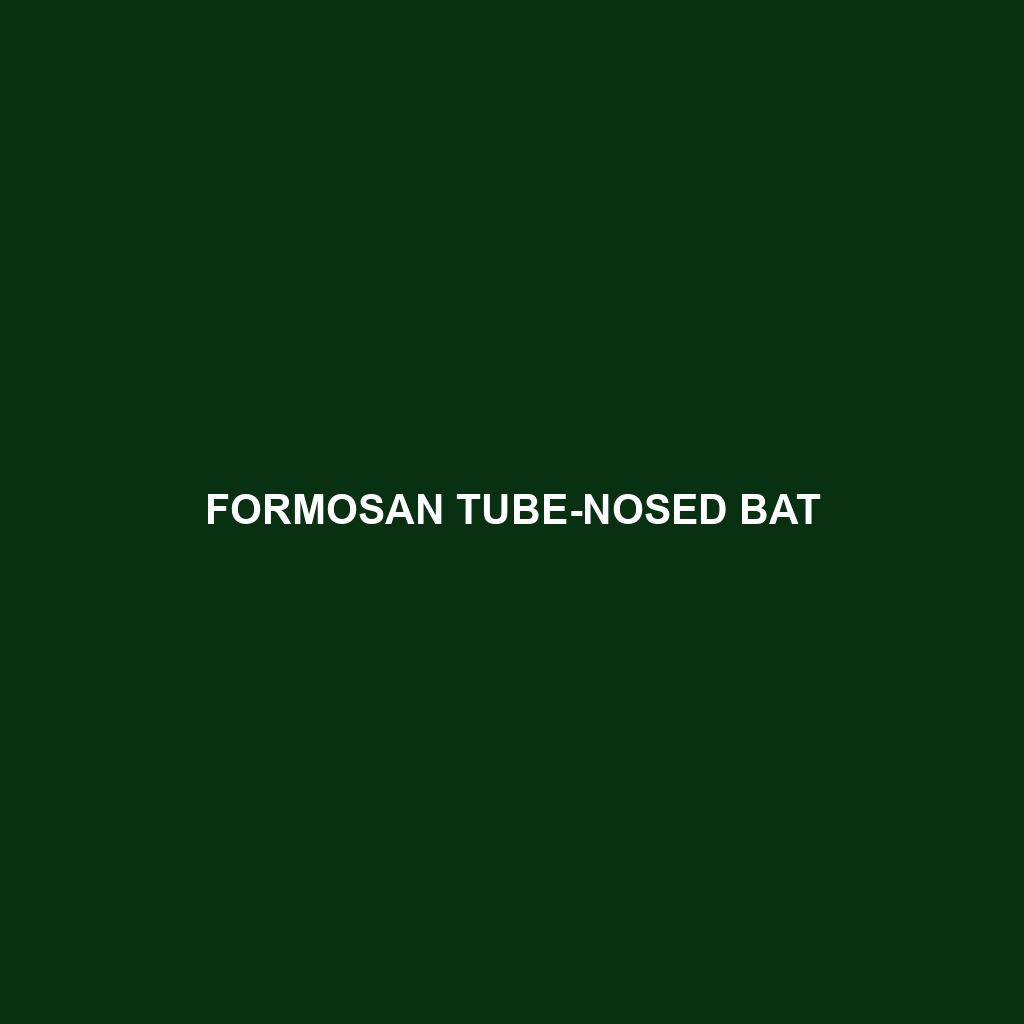Formosan Tube-nosed Bat
Common Name: Formosan Tube-nosed Bat
Scientific Name: Plecotus taivanus
Habitat: The Formosan Tube-nosed Bat is primarily found in the subtropical and tropical forests of Taiwan. This species prefers mature deciduous forests and is often located near water bodies such as rivers and lakes. Its habitat typically includes mountainous areas that provide the necessary roosting sites in caves and tree hollows, where these bats can find shelter and breeding grounds.
Physical Characteristics: The Formosan Tube-nosed Bat has a moderate size, with a wingspan ranging from 23 to 26 cm. Its fur is predominantly brown or gray, with lighter underparts. A distinctive feature of this bat is its uniquely shaped nose, which is flat and tube-like, helping it in echolocation. The combination of its large ears and elongated body make it an interesting subject for both researchers and enthusiasts alike.
Behavior: This bat exhibits nocturnal behavior, emerging at dusk to feed. Formosan Tube-nosed Bats are known for their agility in flight, using echolocation to navigate through their forest habitats. They often roost in small colonies and are social animals, frequently seen interacting with one another during the night. Migration patterns have also been observed, particularly in relation to seasonal changes in food availability.
Diet: The diet of the Formosan Tube-nosed Bat primarily consists of insects, particularly moths and beetles. They demonstrate foraging behavior wherein they hunt mid-air or glean food from vegetation. This diet plays a crucial role in regulating insect populations, and their feeding habits make them vital for maintaining ecological balance.
Reproduction: The reproductive habits of the Formosan Tube-nosed Bat typically involve a breeding season that occurs in spring. Females give birth to a single offspring after a gestation period of about two months. Mothers exhibit strong maternity behaviors, often seen nursing their young while roosting in communal sites, thus providing an opportunity for social learning among the pups.
Conservation Status: The Formosan Tube-nosed Bat is currently listed as endangered on the International Union for Conservation of Nature (IUCN) Red List. Habitat loss due to deforestation, as well as human disturbance from cave exploration, have significantly threatened this species. Conservation efforts are underway to protect its natural habitat and raise awareness about its decline.
Interesting Facts: One fascinating aspect of the Formosan Tube-nosed Bat is its sharp, high-frequency calls, which are utilized in echolocation to detect obstacles and prey. Additionally, this species has a unique adaptation that allows it to thrive in humid environments, which is relatively rare among bats.
Role in Ecosystem: The Formosan Tube-nosed Bat plays a critical role in its ecosystem as a pollinator and pest controller. By preying on insects, it helps to regulate pest populations, which benefits both agricultural practices and natural vegetation. Furthermore, their role in pollination contributes to the health of various flora in their habitat, underscoring their ecological importance.
